WHITE BEACHES IN CABO VERDE
How does this work?
The Cabo Verdean archipelago is known for its beautiful white beaches forming a valuable habitat for intertidal organisms like ghost crabs and unique nesting sites for loggerhead turtles. Macroscopic shell fragments of Calcite and Aragonite (CaCO3) producing organisms were found on beaches along the coast of São Vicente with a varying amount of black volcanic rock debris.
Microscopic investigation of the sand samples revealed a biogenic origin of the white grains with an individual composition for each sampling site. Only a very small fraction of particles <125 µm was found indicating that windblown Saharan dust (1-10 µm) plays a minor role in the formation of the white beaches and dunes in Cabo Verde.
Study Area
In order to find out whether the origin of the white particles is volcanic, marine or windblown from the Saharan desert, we investigated five different sites on São Vicente on a macroscopic and microscopic scale; Praia de São Pedro in the southwest and Baía das Gatas, the sand dunes of Norte de Baía, Praia Grande as well as Calhau Club beach in the northeast of the island. All beaches are white to yellow in colour except the black-coloured beach next to the Calhau Club.
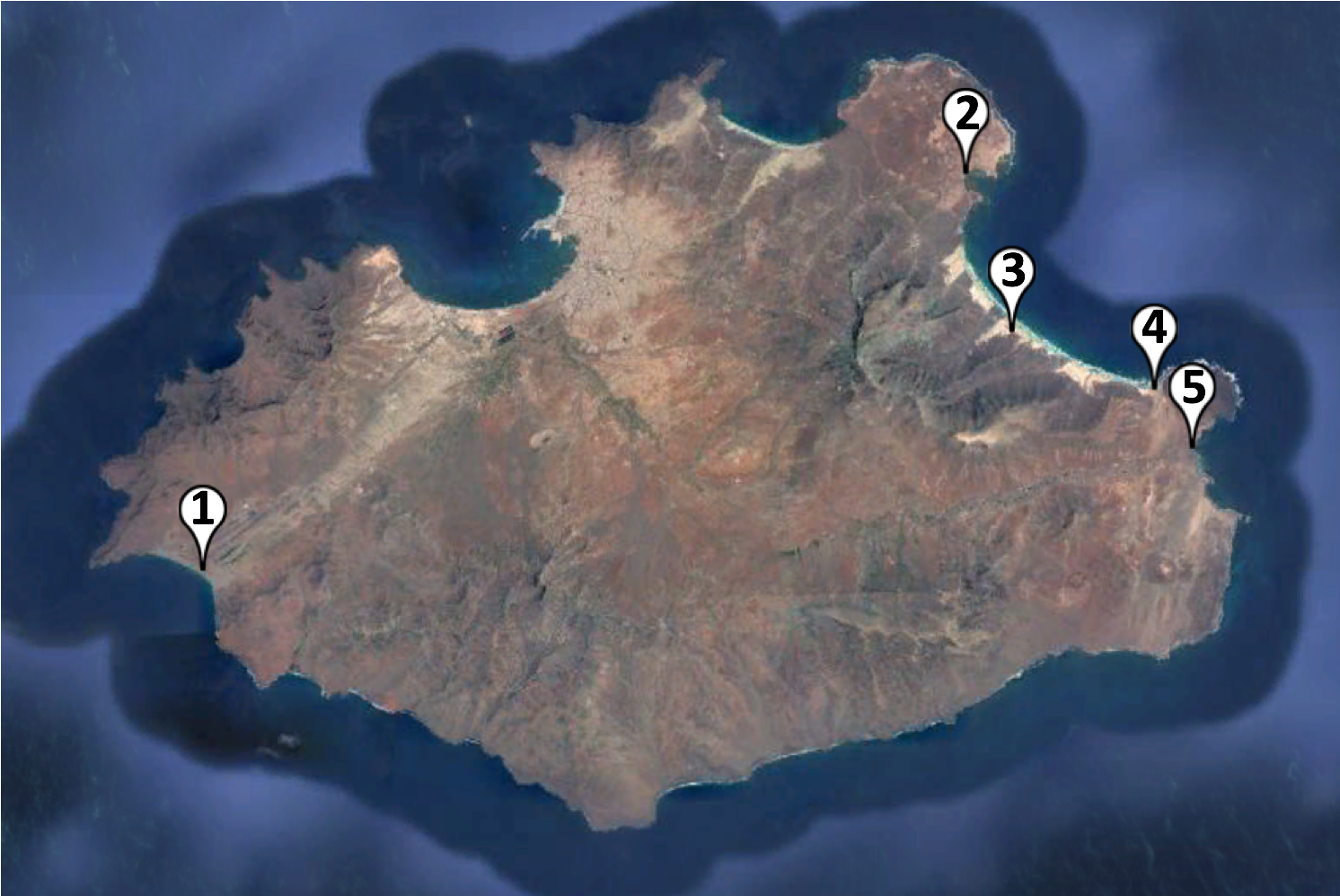
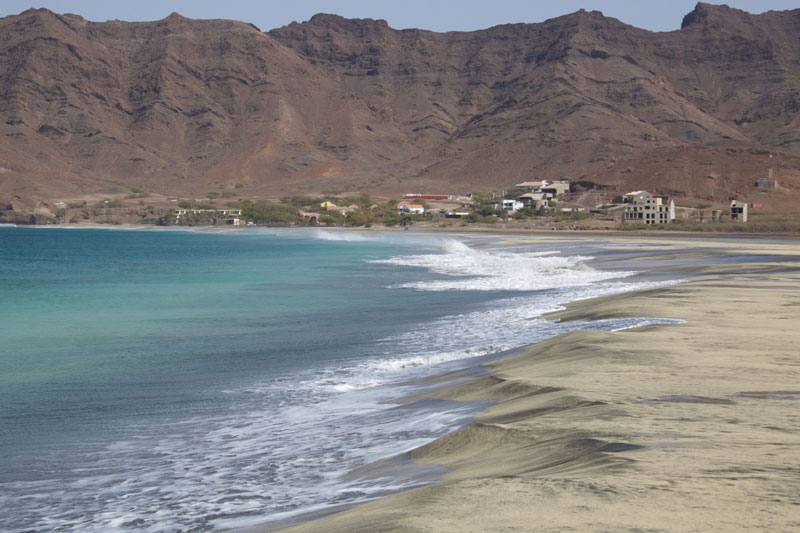
Praia de São Pedro
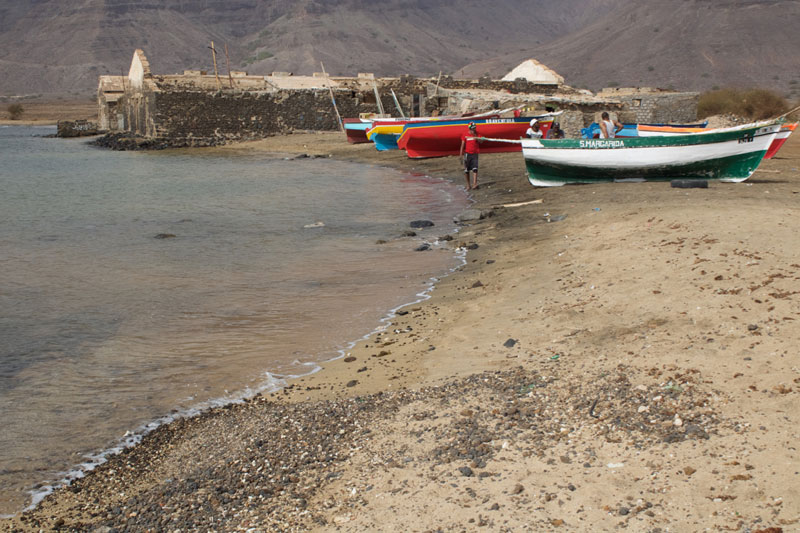
Baía das Gatas
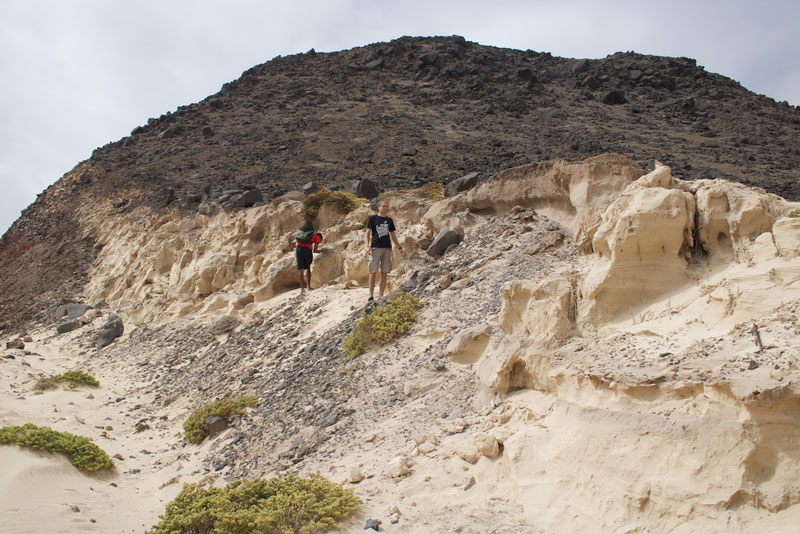
Norte de Baía
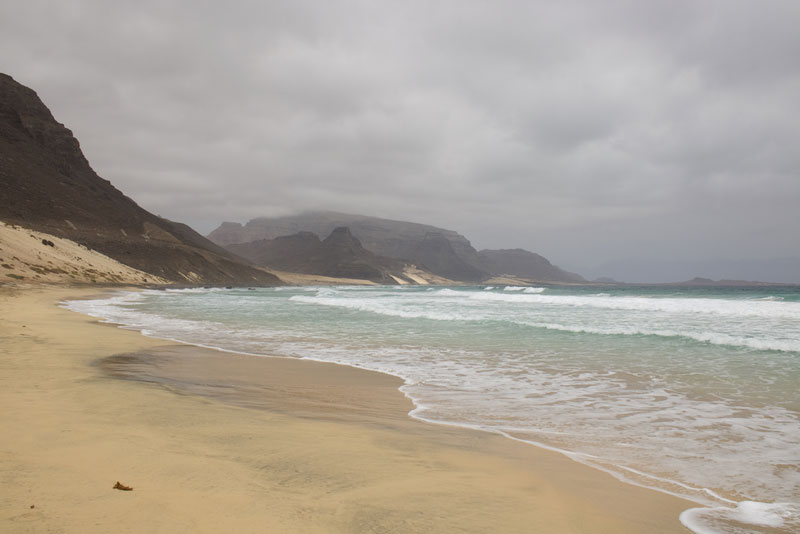
Praia Grande
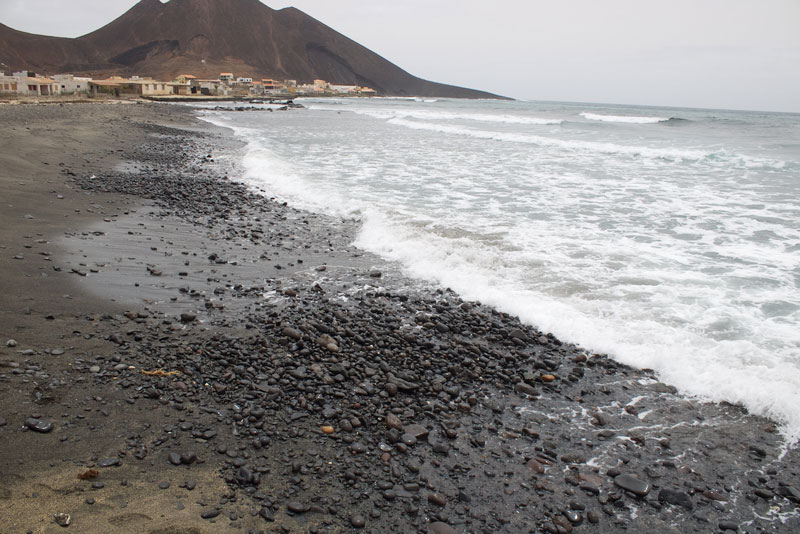
Calhau Club
Click on the red dots to get a view of the sites
Makroscopic scale
Large carbonate fragments were found on many on the visited sites, as seen in figure 2. This suggests that the sand grains may originate from them. The ratio of each type of biogenic organism was different for each individual site.
Additionally, the steepness of the shelf and the wave energy can influence the composition of the beach material, as seen for Calhau Club (sampling site 5). The nearby presence of a young volcano (0.2 Ma) enhances volcanic material flux at that location, which makes it black. Wind energy can transport fine particles inland to form dunes (sampling site 3).
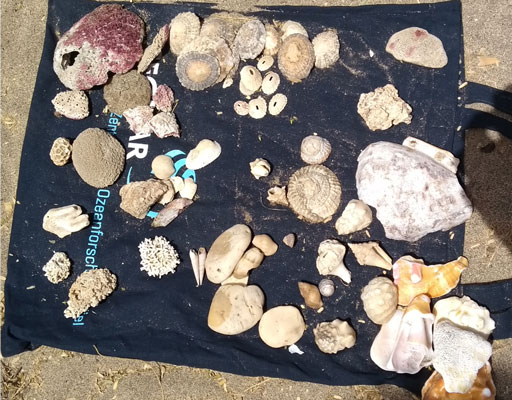
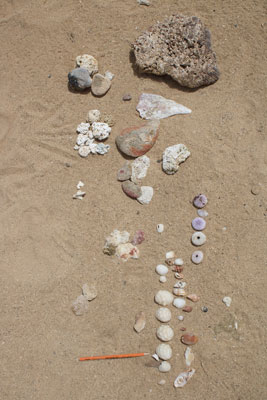
Fragments of marine carbonate producing organisms (monoplacophora, bivalves, spongilus, corals, coralline red algae, gastropods) found on Praia de São Pedro (left) and Praia Grande (right).
Microscopic scale
On a smaller scale, the grains that compose the sand vary in shape and colour from one site to another. As shown in the figure below, the white particles look nothing like granular quartz that normally form common sand.
A simple test with hydrochloric acid suggested the presence of carbonate in the white grain fraction, altough many of the fragments cannot be referred to specific organisms due to high erosion rate. However, the identifiable fragments correspond to the large fragments found on the beaches. As visible on the Norte de Baia image, it is even possible to forminifera in the samples.
Microscopic images of sand samples taken from
(1) Praia de São Pedro
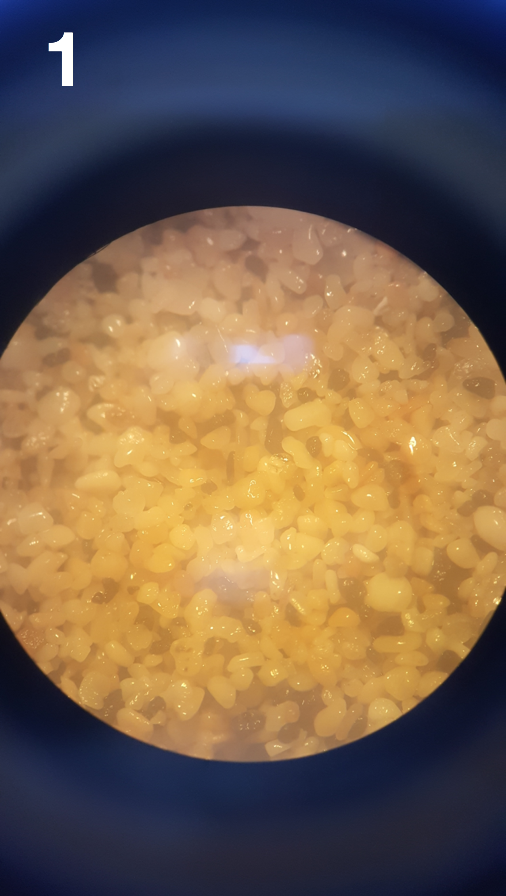

(2) Baía das Gatas
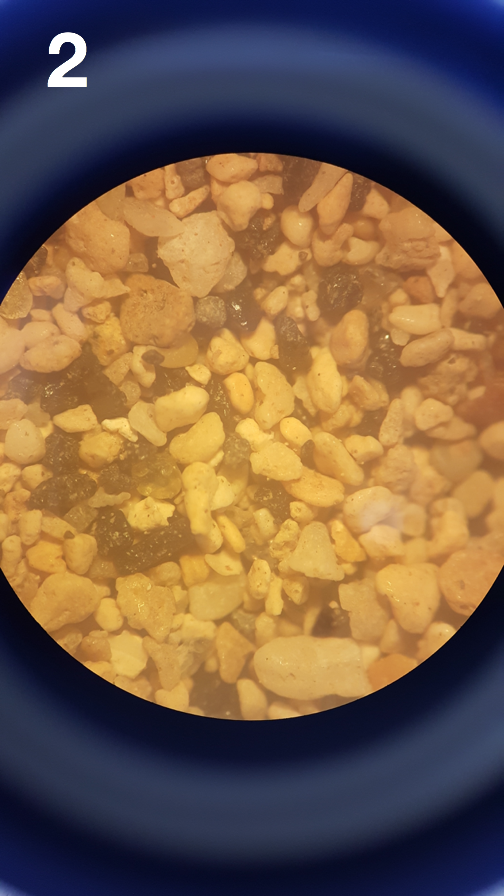

(3) Norte de Baía
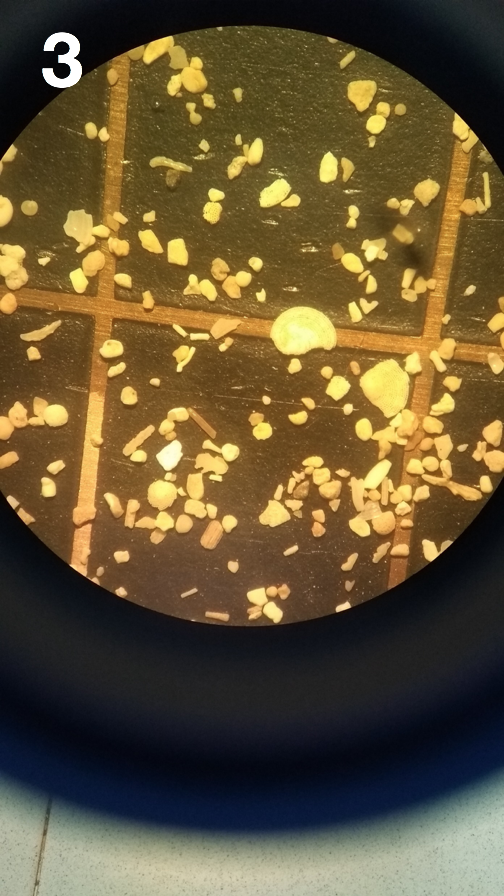

(4) Praia Grande
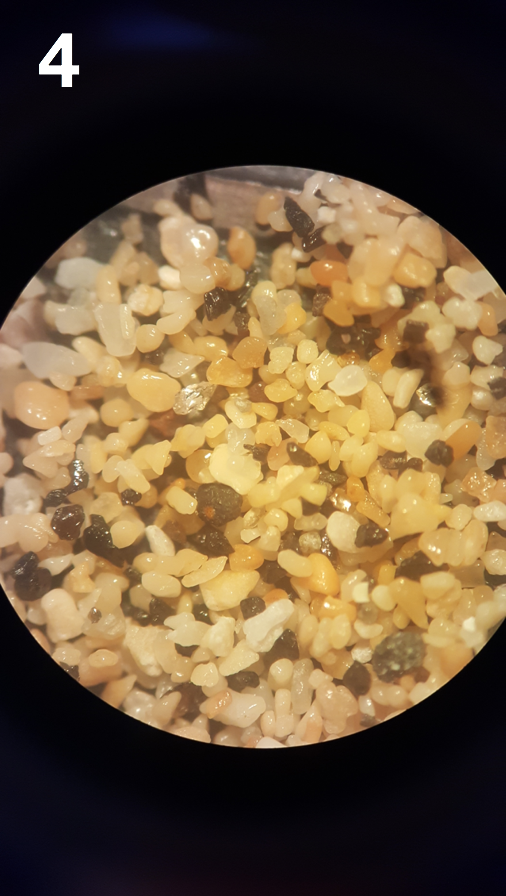

(5) Calhau Club
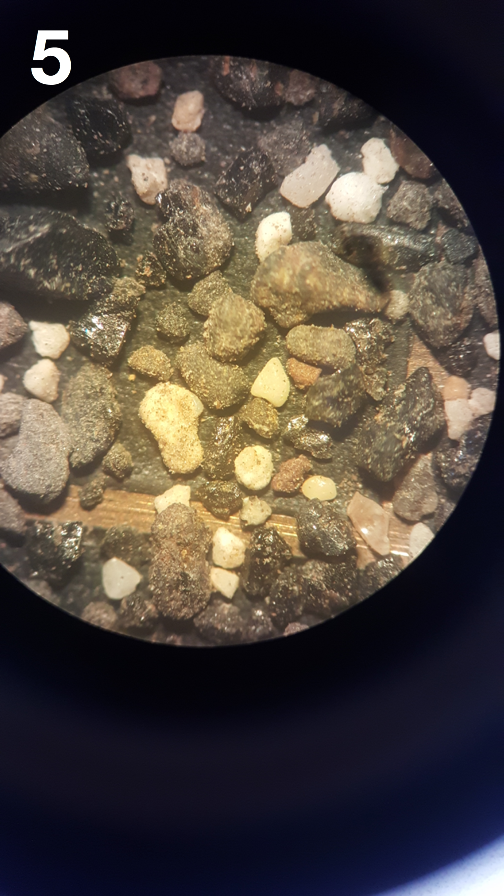

MAIN FINDINGS
- The white sand mostly comes from disaggregated carbonate-producing organisms
- This biogenic material originated from the nearby waters
- The wind and wave energy transports the fragments towards the coastline
- Wave energy erodes grains and affect grain size distribution
- Smaller and lighter particles were transported inland by wind energy to form dunes
Patrick Duplessis (TOSST), Felix Geißler (HOSST), Maldini dos Santos (UniCV), Falko Vehling (HOSST)
